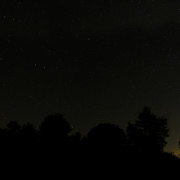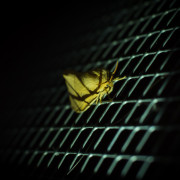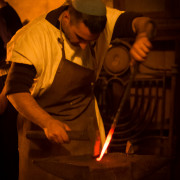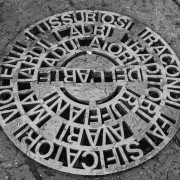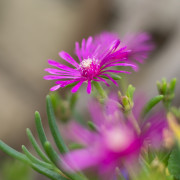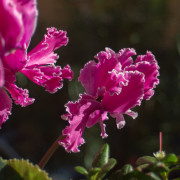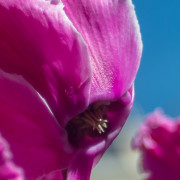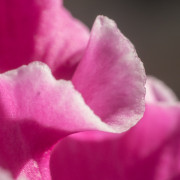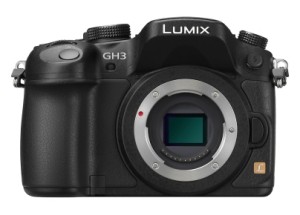 I know it is curious to title an article in this way, since the GH3 was born as a camera, but it is a very common question.
I know it is curious to title an article in this way, since the GH3 was born as a camera, but it is a very common question.
For several years now, after Nikon with the d90 launched the trend of cameras for shooting, Canon has relaunched and dominated the market with its flagships and beyond, covering with excellent cameras a very substantial slice of the video market. Canon has been established as a photographic brand for decades, and its experience and quality is known worldwide. On the video side, Panasonic is catching up very quickly, and with the GH3 they have narrowed the gap even further, thanks to many clever touches and unquestionable quality.
Most people remain puzzled by the photographic side, that is, the reason the machines were born, because compared to Nikon and Canon it has a number of theoretical handicaps.
Since by passion and work I have been photographing for over twenty years, I have used Nikon, Canon, Fujifilm and now Panasonic DSLRs, I decided to make some comparisons to understand what this Lumix GH3 Camera offers.
Personally if I want to use a digital camera, I use exclusively shooting in raw, because I want to take the best and minimize the risks of castration of quality by using formats such as jpeg, the only camera that allowed me the luxury of jpeg was the Fuji s5Pro, a camera with the body of the nikon d200 and with the fuji sensor and technology, all the others I have tried however castrate their potential in jpeg, and considering that the gb of hard drives and cards cost about 1 euro per giga and raw photos fit about 50. For those who want to take decent photos I find the temporary expense of 0.02 cents per photo to be more manageable, especially if 1500 has been spent between the camera and a decent lens.
On simple technical examination, the GH3 suffers from a number of handicaps :
- m4/3 sensor : being smaller it collects a little less light than the nikon and canon aps-c
- higher crop factor : depending on the same lens (50mm for example) on an aps-c the crop factor will be x 1.6 while on m4/3 the factor is x2, so the lens will provide the same image, but with the m4/3 format it will be cropped at the outer edges a 25%, this has the disadvantage that wide angles are less pushed, but on vintage lenses only the central part is used and therefore the best part, suffering less from chromatic aberrations, lateral blurring etc
here you can see some photographs taken with the gh3, with different lenses, from lumix 14-42 powerX to 20mm 1.7, all the way to vintage ones like the minolta rokkor 50mm 1.4, tokina 24mm 2.8 (mounted straight, or inverted for macro shots), 35mm and 85mm samyang 1.4.
As you can see the detail and cleanliness all comes out, most of the photographs you see around with little detail are often caused by incorrect use of noise reduction parameters (which possibly is always better to do in post, with more overall control) or by low quality lenses (I often see people who invest 1200 euros on a camera body, but want to use scratched bottoms as lenses, which is comparable to buying a ferrari and then putting the tires of the cabbage car and the carburetor of a fifty). However as you see from the list, many photos are taken with vintage or manual lenses and the results are more than good.
- Baselice 14-42 powerX Lumix
- Fiori Lumix 20mm 1.7
- Fiori Lumix 20mm 1.7
- Fiori Lumix 20mm 1.7
- Lumix 20mm 1.7
- Lumix 20mm 1.7
- Minolta Rokkor 50mm 1.4
- 35mm 1.4 Samyang
- 35mm 1.4 Samyang
- Samyang 35mm 1.4
- Lumix 14-42 power X
- Lumix 20mm 1.7
- Minolta Rokkor 50mm 1.4
- Samyang 35mm 1.4
- Tokina 24mm 2.8
- Tokina 24mm 2.8
- Tokina 24mm 2.8
- Tokina 24mm 2.8 invertito per macro
- Tokina 24mm 2.8 invertito per macro
- Tokina 24mm 2.8 invertito per macro
- Tokina 24mm 2.8
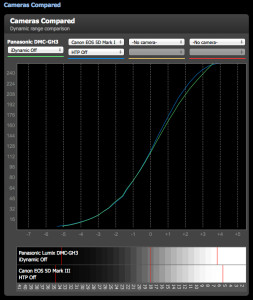 Summing up, the camera has a good response to both color and density to light contrast, in fact not surprisingly the same reviewers of Dpreview tested it and verified that it has a sensitivity very close to that of the Canon 5D mark III, personally I agree on this point for video, while on the photographic side I would be more cautious, since recording a 14bit raw offers more space of action to the Canon shots and therefore to a greater recovery of information, as well as a higher resolution, but we are still talking about a camera that costs almost 1/3 of the Mark III.
Summing up, the camera has a good response to both color and density to light contrast, in fact not surprisingly the same reviewers of Dpreview tested it and verified that it has a sensitivity very close to that of the Canon 5D mark III, personally I agree on this point for video, while on the photographic side I would be more cautious, since recording a 14bit raw offers more space of action to the Canon shots and therefore to a greater recovery of information, as well as a higher resolution, but we are still talking about a camera that costs almost 1/3 of the Mark III.
Speaking of image definition and cleanliness, if you use decent optics, and so I’m thinking of the 12-35 2.8 for the Lumix or the 24-70 2.8 on the Canon you have very good renditions, very fast and efficient autofocus, and full tropicalization for the gh3 that I don’t mind for those who do more “action” photography.
Those who buy the Lumix GH3 do so primarily for video, since if their primary interest is photography and they want a mirrorless body with the m4/3 they turn to Olympus OMDs, but as a camera it defends itself reasonably well.

